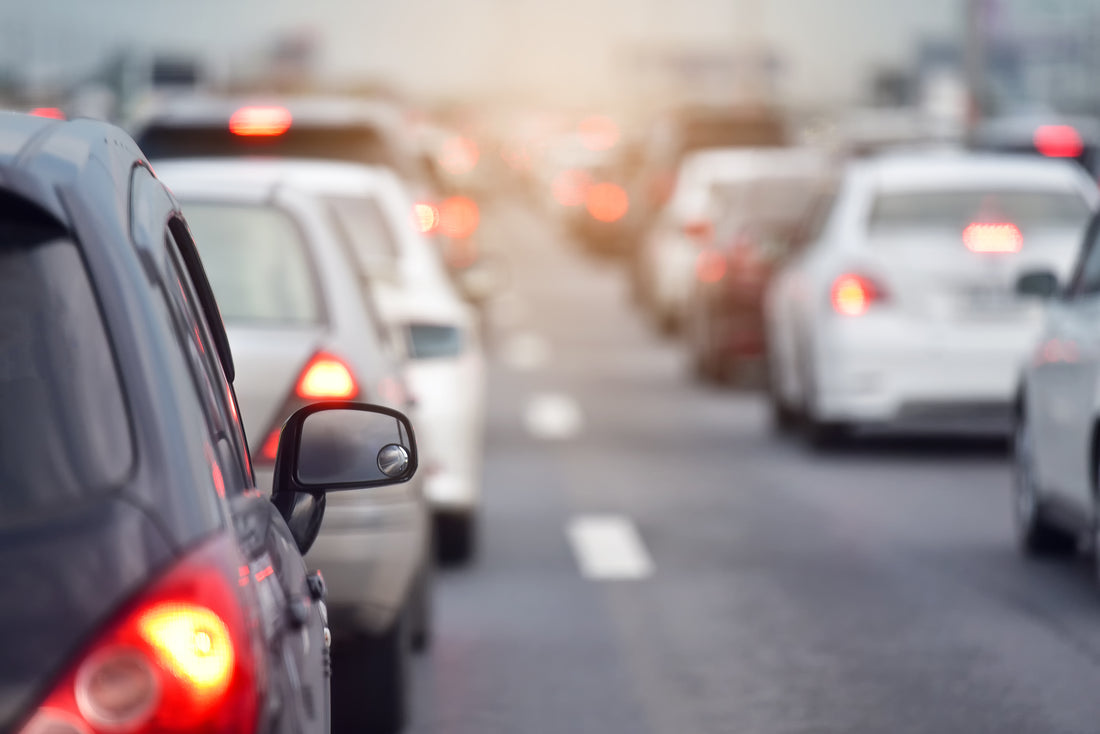We all know how important safety is, but in our daily rush it’s easy to overlook some of the details that’ll make a difference in staying safe when on the road. Here are 10 ways to stay on the road and be safe while you’re there.
Carry emergency items

Always keep these essential objects in your vehicle, and – eventually – you will be very grateful that you have them.
- Flat tire repair kit
- Fire extinguisher
- Jumper cables
- Flashlight (with batteries, of course)
Check your shocks, brakes and tires

Avoid surprises by regularly monitoring the health of these vital systems in your vehicle.
- If you notice a noise when you brake or a subtle difference in braking performance, it’s time to get a brake check as soon as possible.
- Ensure you have enough traction to grip the road by regularly checking the tread depth of your tires. Use a tire pressure gauge to make sure they are properly inflated.
- Your shock absorbers may be broken if you have trouble getting around corners.
Understand the signals on your dashboard

Car dashboards have up to 64 different symbols to let you know when something is wrong. You’re not alone if you don’t know what they all mean.
- Flick through your car’s manual to familiarize yourself with the various symbols to make sure you know what your car is trying to tell you.
- Read this articlefor a detailed guide to the communication coming from your vehicle.
Develop a sense of smell about your car

Car smells inevitably mean trouble, but what kind of trouble?
- Burnt carpet? Check if your handbrake has been left on, or the brake pads are overheated.
- Hot oil? Look out for overflow from a recent oil change.
- Rotten eggs? The catalytic converter may be faulty, which could be affecting your car’s engine.
Stay alert, avoid distractions

- Take regular breaks to check messages or make calls.
- Watch your speedometer, look out for road signs, and stay focused.
- Pull your vehicle over every now and again to stretch your arms and legs.
Replace damaged windshields

Chipped or cracked windshields can strike at the most unexpected and inconvenient times. If visibility is affected as a result,
- Find the nearest and safest place to stop
- Set up an appointment with your nearest mobile repair service or call your local emergency hotline
Stay aware of your surroundings

- Keep a buffer between yourself and other vehicles.
- Don’t respond, if you’re tailgated by a reckless driver.
- Monitor your blind spots and stay out of others' blind spots.
- Adjust your speed for rainy conditions.
Drive safely at night

Reaction times tend to be slower in darker conditions, and depth perception tends to be less accurate at night.
- Ensure your headlights are properly aligned for maximum visibility.
- Keep a safe distance behind other cars on the road.
Know what to do when your car breaks down

Follow these steps after pulling over into the hard shoulder.
- Immediately turn on the vehicle's hazard lights.
- Call for help using your cell phone or a highway emergency call box.
If you are carrying safety triangles or lights, only set them up 20 meters behind your vehicle when you are sure it is safe to do so.
And finally… be your own best safety feature

Don’t rely on your vehicle safety features to protect yourself and your family.
- There is no substitute for basic driving safety.
Remember: if something doesn’t smell, sound or feel right, seek advice from your mechanic or call your local emergency hotline, as soon as possible. Whatever happens, always keep calm and take note of your surroundings.

